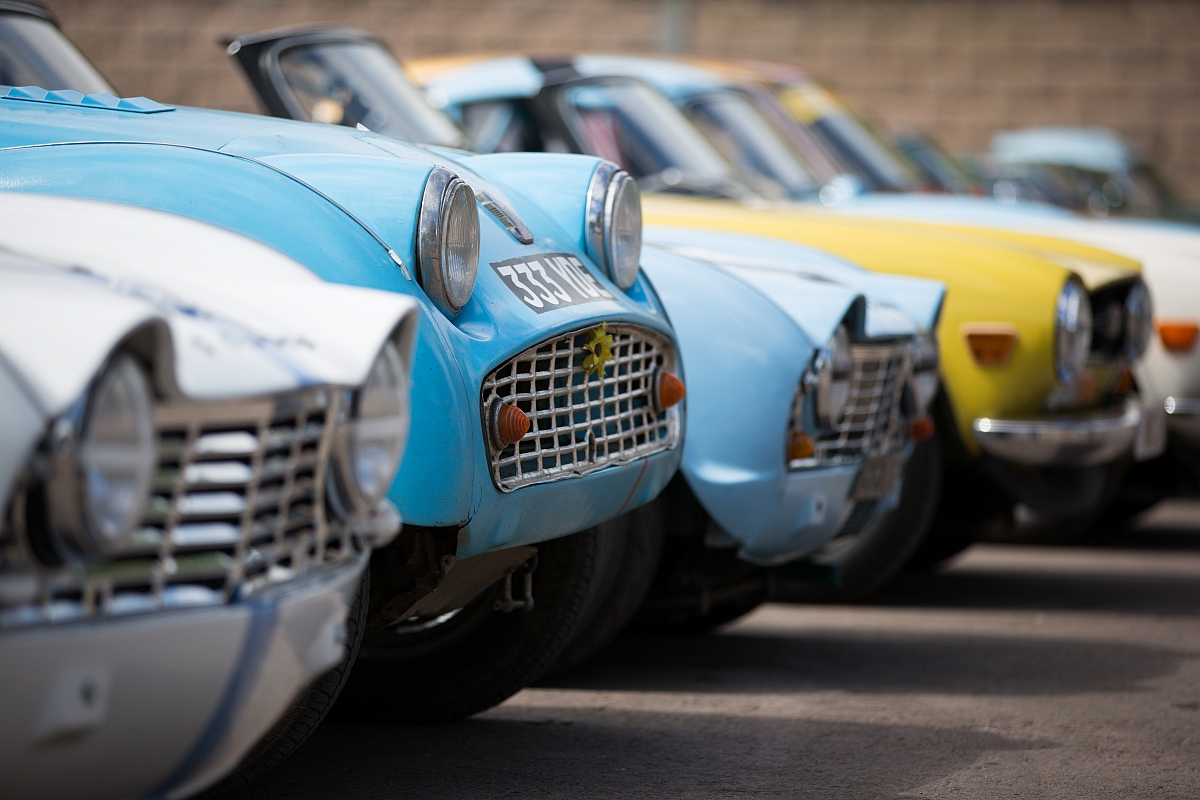TR Buyer's Guides

General buying advice for all TRs
The most common enquiry received by the TR Register is "I'm thinking of buying a TR, what should I look for?" With this in mind, a series of Buyer's Guides have been produced to cover each of the series of Triumph TR sports cars These can be accessed form the links above.
Basic rules for searching for a sound example apply to all models. Like most cars, all TR's rust and over the years many have been partially or totally rebuilt with varying levels of competence. It is fairly easy to see or feel the weaknesses of a TR. Look along each side of a car for panel alignment, ripples and dents. Examine the whole length of the tops of the wings, where corrosion from beneath is common.
TR doors are hung between "A" and "B" posts. Open the doors and check the condition of these. While the doors are open also check the edges of the wings. Then, with care (rusty edges can be sharp), feel along the bottoms of the wings and along the sills, beneath the doors. Check the bottoms of the doors, both visually from the outside but also by feel underneath. Check the edges of the bonnet and boot panels, both externally and with them open.
Whilst the boot lid is open check carefully along the top edge of where the wing joins the body. A torch will be essential for this! Likewise, with the bonnet open check the inner panels carefully, especially at the top where they join the outer wings and around the front, near the headlights and bumper mounts. Leaking windscreen washer bottles can cause damage in an unexpected area. So check carefully beneath the bottle. Brake fluid and battery acid strip paint and cause corrosion of the metal beneath. Check these areas not only for signs of corrosion but also for any welds that appear non-original. All these areas should be finished in the same colour as the exterior of the body. A different colour, black, under-seal or anything else is not correct.
The TR2-6 were built on a very strong chassis, although the chassis used up to and including the TR4 were the strongest. They should all be checked for corrosion, as well as distortion (through impact damage) and poor repair. There should be no unusual welds or patches.
As a rule the front half of the chassis is protected from corrosion by oil leaks, but it is most prone to impact damage. The rear half should be thoroughly checked for corrosion, with the 6 cylinder cars appearing to suffer more than the TR4A.
The TR7, introduced in 1975, is completely different in body shape, engineering and mechanics to the earlier TR's. Initially produced only as a fixed head coupe, whereas the others were open sports cars, it is of monocoque construction (no separate chassis) and with an engine developed for the Triumph Dolomite. Front suspension is by McPherson strut whilst rear is by beam axle.
Throughout the whole life of the TR series by far the main market was the USA. Many cars have since been re-imported and this remains a regular activity. Buyers should be aware that not all US cars spent their entire life in 'dry' States and that corrosion on US cars can be just as severe as found on any home market cars. In addition, all US cars were originally LHD so it is important to ascertain the original specification of any car and verify the quality of any conversion work. Converted cars tend to have a slightly lower value than original RHD vehicles.
TR's originate from an era prior to VIN's (Vehicle Identification Numbers) and used a number identified as the Commission Number. It is this number that should be found on an aluminium plate affixed to the car and detailed in the V5 under 'VIN'. Ensure the numbers are the same then, if possible, armed with Registration, Engine and Body numbers contact the relevant Registrar for that model for advice on authentication.
Whilst the text overleaf gives more information specific to a particular model of TR this document is intended only as a guide to the TR buyer. It is not a comprehensive, definitive, 'checklist'. Would be purchasers who feel unqualified to assess the condition of a vehicle are advised to retain the services of someone capable of such an assessment.
Click the links above for model specific buyers guides
